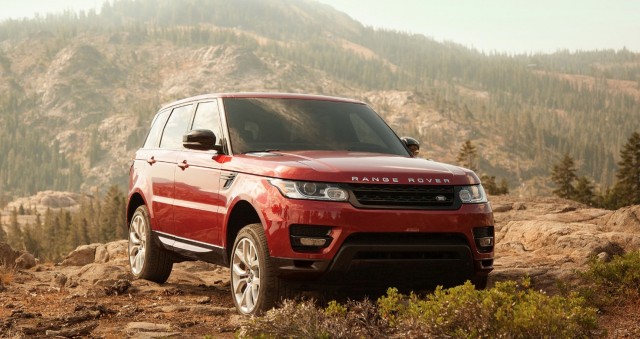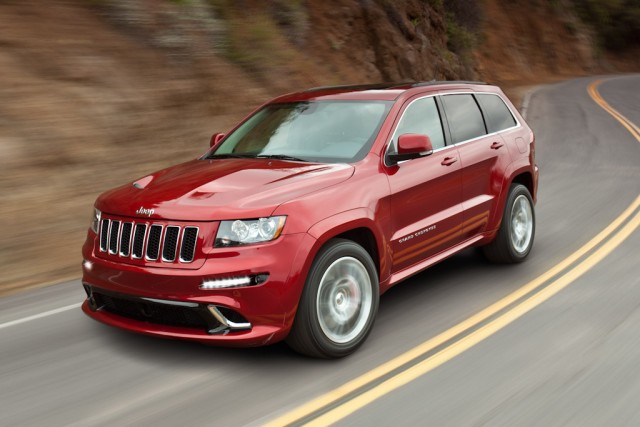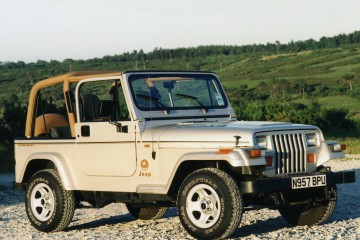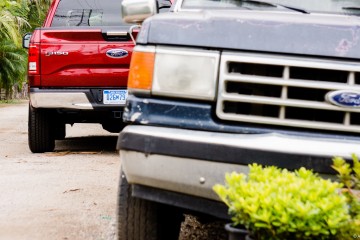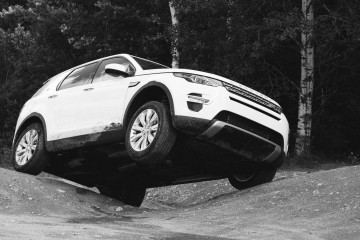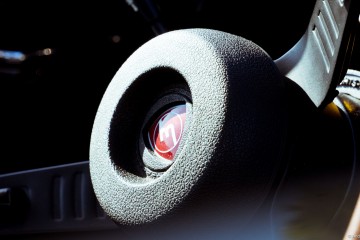So, you want a brutally fast luxury SUV that also has impressive off road capabilities. Your first choice will likely be a new Range Rover Sport Supercharged, but you’d do well to consider a pre-owned Jeep Grand Cherokee SRT-8. Unlike the Range Rover, the Jeep doesn’t carry nearly as much, if any, prestige tax. What you’re paying for is pure performance and the luxurious interior is simply a bonus. In my opinion there’s very little difference between the cabin quality of the 4th generation Grand Cherokee and that of the current Range Rover. Both use exceptionally high quality materials throughout the interior, but I give the Jeep the edge on the technology front, even on models that are a few years old. Land Rover’s InControl infotainment system is good, however it’s not as good as Chrysler’s UConnect system. The latter runs faster, with fewer glitches, and can be had with up to an 8.4″ screen.
Of course if you’re in the market for a performance luxury SUV, infotainment systems might not be a big factor when deciding what you’re going to get. Sure, they will play a part, but what you really ought to care about more than anything else is the overall value factor. While both vehicles have dedicated fan bases, Jeep has a better reputation for reliability. Though depreciation hits the luxury SUV market particularly hard, the fall off on a Jeep isn’t as bad as that of a Land Rover product. That means paying more upfront for a pre-owned Jeep, but it will hold its value better in the long run. It’s always good to think long term when buying a big ticket item like a luxury SUV, especially since they’re not exactly the most responsible purchase in the first place.
Don’t get me wrong, I don’t discourage people from considering high performance versions of vehicles originally intended for off road use. I think they’re great and many of them are on my list of vehicles I’d like to own. I just happen to think that if you’re making an risky decision, it’s best to limit that risk as best you can. The Jeep will cost you less across the board: insurance, maintenance, operating costs, you name it. While the Jeep is down on hp to the Range Rover, 470 vs 510, it has a marginal edge in the torque department, boasting 465 vs 461. Maybe that difference of just 4 lb-ft of torque is what gets the SRT-8 to 60 4/10ths of a second quicker, 4.6 vs 5.0, than the Sport Supercharged. In terms of daily driving it’s unlikely you’ll ever notice that difference, but when it comes to bragging rights, you’ll be the clear winner.
The only real advantage that the Sport Supercharged has over the SRT-8 is that it has a height adjustable air suspension, whereas the SRT8 does not. If you can live without command over the ride height of your V8 powered SUV, the SRT-8 is the clear choice. With the right tires you can still have loads of off road fun with the SRT-8, you’ll just have to plan approaches more carefully than you than you do with the Ranger Rover. I think paying more attention to your off road routes is of minor consequence when considering the price difference between these two vehicles. A new Range Rover Sport Supercharged starts at $79k and 2012 Jeep Grand Cherokee SRT-8s can be had starting around $35k. Paying half as much for a vehicle that is, at the very least, equal to the more expensive option? That sounds like a no brainer to me.
2012 Jeep Grand Cherokee SRT-8 on Cars.com
Find more Jeep Grand Cherokees on AutoTempest!
(Article continues below)

